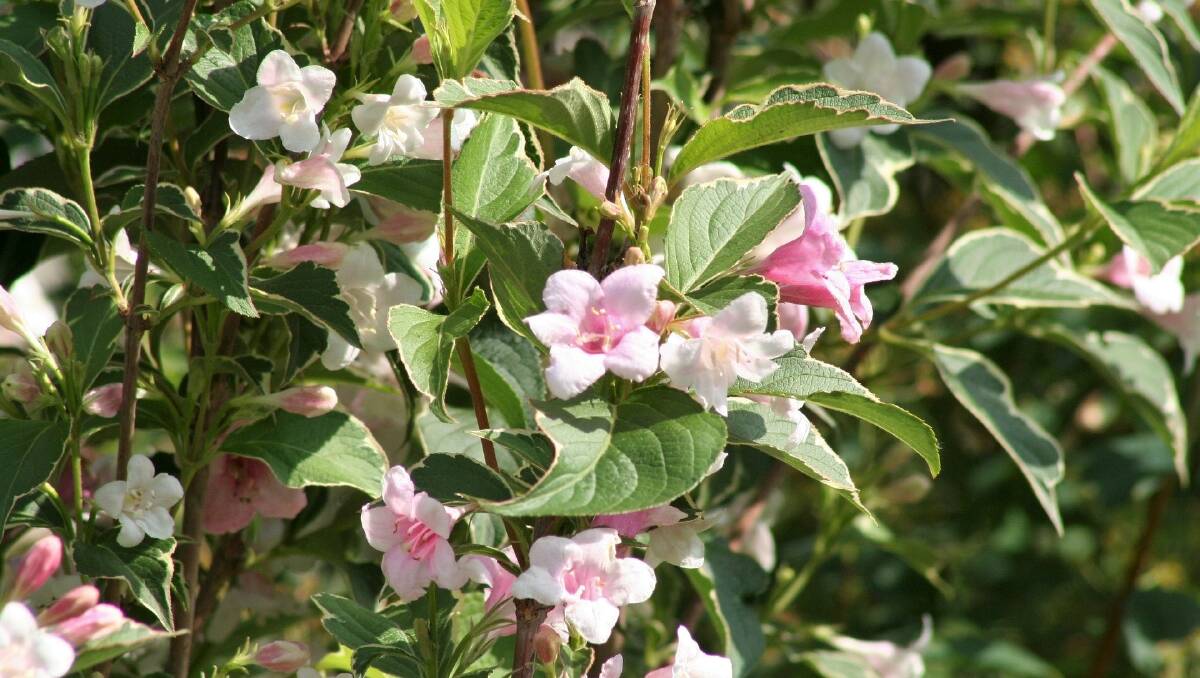Gardening matters || to control weeds | L’Express Armidale
newsletters, selection list of editors,
Nice weather lately for water lilies, waterfowl and Wellingtons! Even with only odd days above 24-26 degrees, the gardens still grow quickly and fabulously. Sure, weeds grow at a very fast rate, but at least the moist soil makes most of them easy to pull. Maintaining weed control in a season like this, and at this busy and busy time of year (days before Christmas), can certainly be a challenge. However, if you can find the time, you will save yourself some extra work in the months to come. You can try to spend just 10 minutes a few times a week and focus on the weeds that are blooming and about to sow. Another task that gardeners may escape this busy time of year is pruning spring flowering shrubs after they have bloomed. Plants that bloom on “old wood” mean that after flowering they begin to form buds for the flowers of the following spring. The buds remain dormant over the winter on last year’s growth, which is called old wood. Plants that bloom on old wood usually flower early in the growing season. It is important to prune plants that bloom on old wood soon after flowering has finished, because if you wait too long after flowering has finished, they may not have enough time to create plants. flower buds for next year. If you prune in winter or early spring before flowering, you will remove flower buds. Learn more about gardening: A common cause of a shrub not flowering is pruning it at the wrong time and inadvertently cutting off embryonic flower buds. Shrubs that bloom on old wood include Forsythia, Cytisus (broom), Rhododendron, Azalea, Magnolia, Witch Hazel (Hamamelis), Lilac (Syringa), quince (Chaenomeles), Philadelphus, Spiraea, Viburnum, Weigela, flowering honeysuckle winter (Lonicera fragrantissima), Deutzias and Camellia. Shrubs don’t necessarily require pruning to flower and perform well. If your spring-flowering shrub has bloomed well this spring and isn’t too tall for the space, you can go ahead and skip pruning. Moist conditions are also popular with snails and slugs, so watch for signs of damage and use your preferred method of control. Check the grafted plants and remove any shoots growing under the graft. It’s much easier to do when the new growth is soft and fresh, so don’t leave it on for too long. Dar Brookes Our reporters work hard to provide local and up-to-date news to the community. Here’s how you can access our trusted content:
/images/transform/v1/crop/frm/DGrXNFBDsLGR33GNb27qNq/f84c941b-7023-499d-8067-bfed26e213f5.jpg/r0_98_1920_1183_w1200_h678_fmax.jpg
Nice weather lately for water lilies, waterfowl and Wellingtons!
Even with only odd days above 24-26 degrees, the gardens still grow quickly and fabulously.
Sure, weeds grow at a very fast rate, but at least the moist soil makes most of them easy to pull.
Maintaining weed control in a season like this, and at this busy and busy time of year (days before Christmas), can certainly be a challenge.
However, if you can find the time, you will save yourself some extra work in the months to come. You can try to spend just 10 minutes a few times a week and focus on the weeds that are blooming and about to sow.
Another task that gardeners may escape this busy time of year is pruning spring flowering shrubs after they have bloomed. Plants that bloom on “old wood” mean that after flowering they begin to form buds for the flowers of the following spring. The buds remain dormant over the winter on last year’s growth, which is called old wood.
Plants that bloom on old wood usually flower early in the growing season.
It is important to prune plants that bloom on old wood soon after flowering has finished, because if you wait too long after flowering has finished, they may not have enough time to create plants. flower buds for next year.
If you prune in winter or early spring before flowering, you will remove flower buds.
Learn more about gardening:
A common cause of a shrub that won’t flower is pruning it at the wrong time and inadvertently cutting off the embryonic flower buds.
Shrubs that bloom on old wood include Forsythia, Cytisus (broom), Rhododendron, Azalea, Magnolia, Witch Hazel (Hamamelis), Lilac (Syringa), quince (Chaenomeles), Philadelphus, Spiraea, Viburnum, Weigela, flowering honeysuckle winter (Lonicera fragrantissima), Deutzias and Camellia.
Shrubs don’t necessarily require pruning to flower and perform well. If your spring-flowering shrub has bloomed well this spring and isn’t too tall for the space, you can go ahead and skip pruning.
Moist conditions are also popular with snails and slugs, so watch for signs of damage and use your preferred method of control.
Check the grafted plants and remove any shoots growing under the graft. It’s much easier to do when the new growth is soft and fresh, so don’t leave it on for too long.
Our reporters work hard to provide local and up-to-date news to the community. Here’s how you can access our trusted content:


Comments are closed.